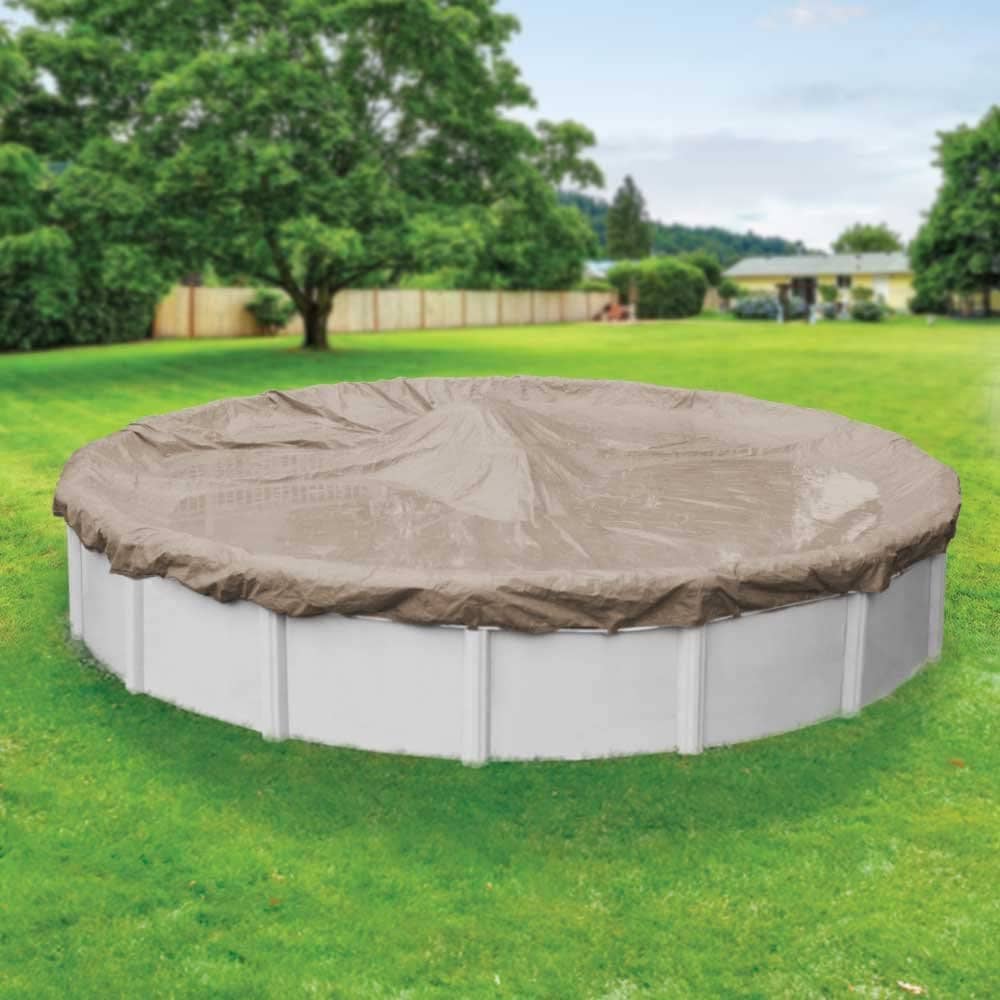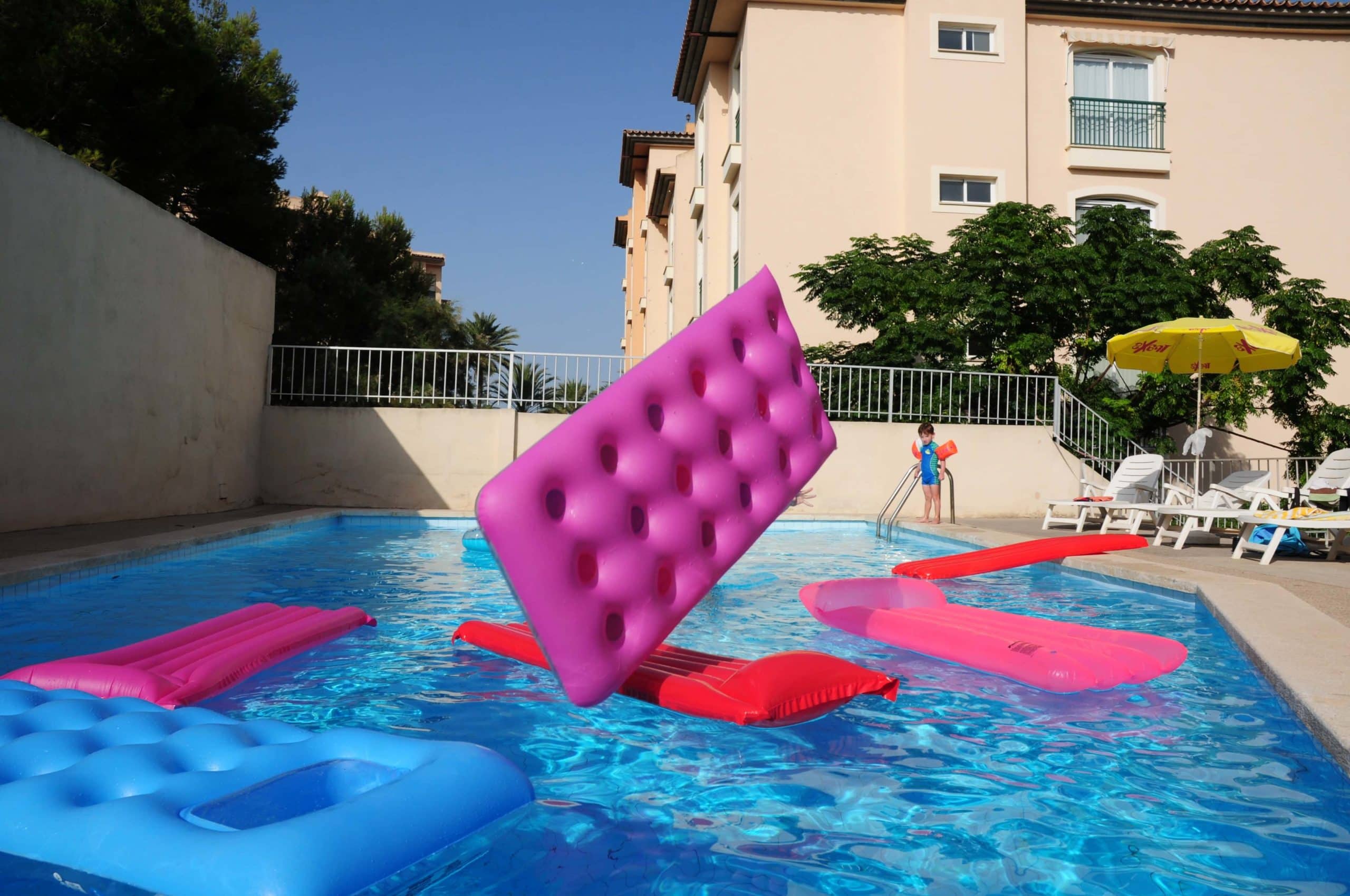3 Alternatives to Using an Air Pillow
-
Pete Ortiz
- Last updated:

An air pillow is, without a doubt, the most common method for keeping your pool walls protected in the winter months. However, some homeowners have used methods that have worked better than air pillows. Other pool owners are disappointed in an air pillow that may have lost air or popped during a prior winter. If you want to go your own way and break away from the air pillow crowd, we found a few alternatives for you.
The 3 Alternatives to an Air Pillow
1. What Floats?

Are you one of the pool owners who are tired of continually buying products for your pool? Does the thought of a new air pillow, all the winter chemicals, the winter pill, and a new pool cover you have been putting off get you a bit stressed about closing the pool? Many pool owners use a float under their cover instead of an air pillow.
The plus side to using a float is that you likely already have one lying around. The downside is that they are often not as strong as air pillows. It’s unrealistic to put a float from the dollar store under there and expect it to hold up throughout winter and a few deep freezes. If you have something that you think is sturdy and can hold up for the entire winter, then by all means, give it a try, but be sure to watch it closely.
2. Homemade Specialty
Plenty of pool owners have made air pillow alternatives. Perhaps one of the most interesting designs we found is a plastic bottle air pillow. Plastic bottles from pool chemicals were saved throughout the season to create this alternative air pillow. Once you have a decent number of containers (with their caps on), you string them together. When strung together, they will make a large plastic ball.
The best part about this method is that it is almost free. You can make it with supplies you should have lying around at the end of the season. If constructed right, the plastic bottle ball will not break or pop.
The downside to this method is the time it takes to put together compared to ordering an air pillow and having it delivered the next day. You also have to make sure that the bottles stay together. When they start separating and floating all around on their own, it can be kind of a mess. It works best with containers of the same size.
3. Foam
One smart pool owner came up with the idea to use foam insulation instead of an air pillow. He bought thick sheets of insulation at a Home Depot, taped them together, and then wrapped them with plastic. It created a foam square that floats very well in the center of the pool.
The foam square will last many years without having to be replaced. If you need to wrap the plastic after a few seasons, it is a quick and simple fix, but the foam should still be intact.
The downside to this method may be the cost, but if you are someone who is replacing air pillows every year, it might end up being a cheaper method. For more information on how to construct this foam alternative, you can click here.
Why Do I Need an Air Pillow?
When closing an above-ground pool for the winter, it’s imperative to use an air pillow. If you have deep freezes during the winter, your pool water will freeze. As pool water freezes, the water will expand. When the water expands, the sides of your pool will be under tremendous stress and could quite possibly break.
Placing an air pillow in the middle of the pool under the cover will help reduce some of the stress on the walls. It is a straightforward, quick, and easy option for preventing something that could cause severe damage to your pool.
Does My Air Pillow Need to Be In The Center Of The Pool?
Many pool owners think that a perfectly centered air pillow will help keep your pool’s cover clean. They believe having it in the center helps dirt and water flow to the sides for more natural cleaning. Although this could technically happen, it is not the purpose of the air pillow.
As long as you have an air pillow in the water, it will work fine, even if it is off-center. Throw it in, put the cover on top, and if it’s a few feet off, don’t lose any sleep over it.
What Are the Downsides to Using an Air Pillow?
From a pool maintenance and care perspective, there are no downsides to using an air pillow. However, some homeowners will get frustrated with an air pillow that pops or bursts during the year. That is a problem and will cause quite a bit of work. Some people feel that using an air pillow is unnecessary, and other options work just as well.
What Happens If My Air Pillow Pops?
This is a tricky problem, and there are a few solutions. If you know there will be no more deep freezes, you don’t have to buy a new pillow until next year since you’ll be opening your pool in a few weeks.
You will most likely have to remove part of the cover and place a new air pillow in the water to avoid ice damage. Another trick that seasoned pool owners use is to place two air pillows under their cover at the start of the winter. If one goes down, you’ll have a backup. They could both end up breaking, and then you are left with a problem, but this isn’t a bad preventative measure to take.
Conclusion
An air pillow is a great solution that protects your pool when the temperature drops. Although cheaper alternatives exist, they’re not as convenient as the air pillow since you have to construct them. However, if you have time to complete a DIY project, you can save money by building a homemade air pillow. If you have been using an air pillow for years and have no issues, just keep using it. It is not worth your time to invest in other models if your air pillow stays inflated year after year.
Contents


